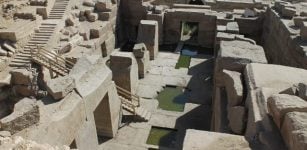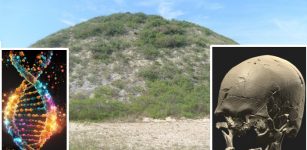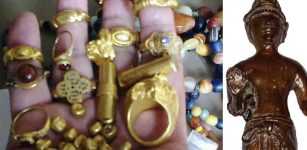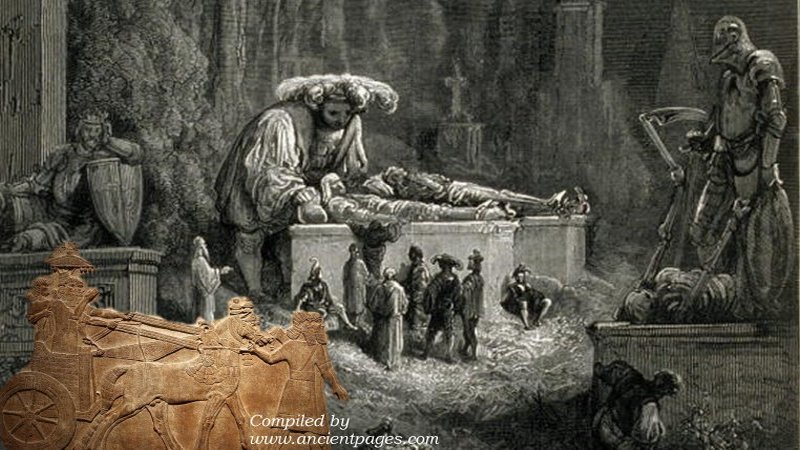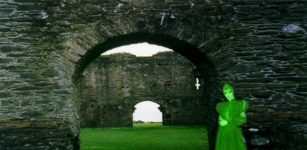‘Chac Mool’ – Intriguing Life-Size Figure Carved In Single Stone
MessageToEagle.com – “Chac Mool” (chacmool) is one of the most famous ancient statues throughout Mexico and it has been seen in many important ancient places.
‘Chacmool’ literally means “red or great jaguar paw” (chac means “large” or “red” and mool means “jaguar paw” in Yucatec Maya, and refers to the large number of three-dimensional and curious male figures in Precolumbian Mesoamerican art.
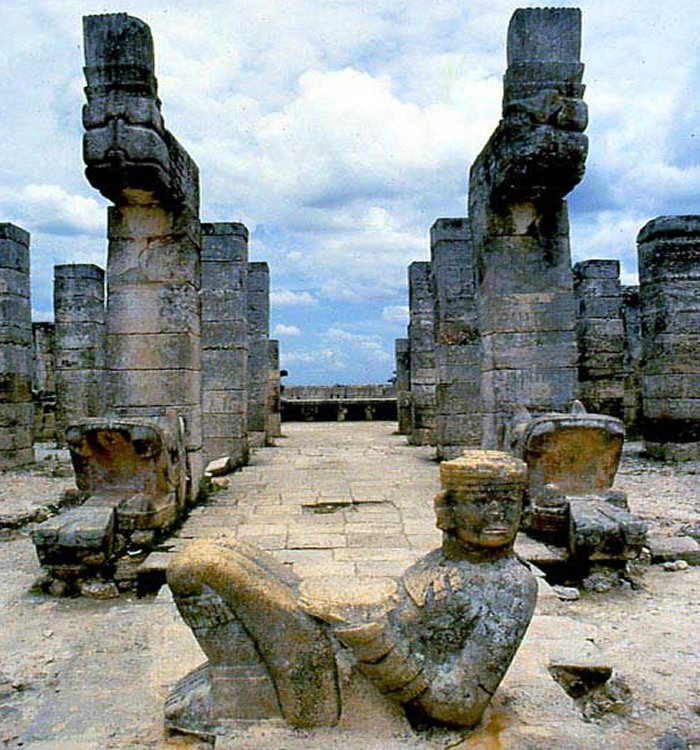
dissemination, and meaning have not been proposed. Photo via mexicolore.co.uk
The monumental stone sculpture known as a “Chacmool” first appeared suddenly in Mesoamerica, probably in the 9th century CE. The most famous statue of this type was excavated in the area of the Platform of the Eagles and Jaguars in Chichen Itza in 1875 by the nineteenth-century explorer Augustus Le Plongeon (1825 – December 13, 1908).
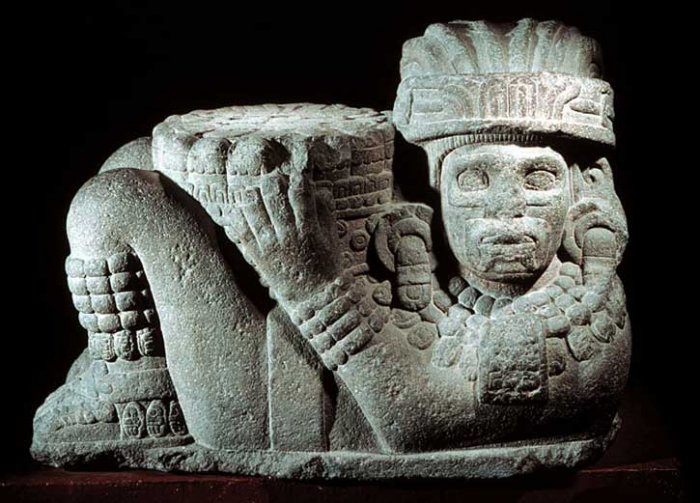
Le Plongeon named it Chacmol, which he said was Maya for “the paw swift like thunder.” He believed that the statue depicted a warrior prince with that name who once ruled Chichen Itza.
However, the first published account of such a statue appeared in 1832.
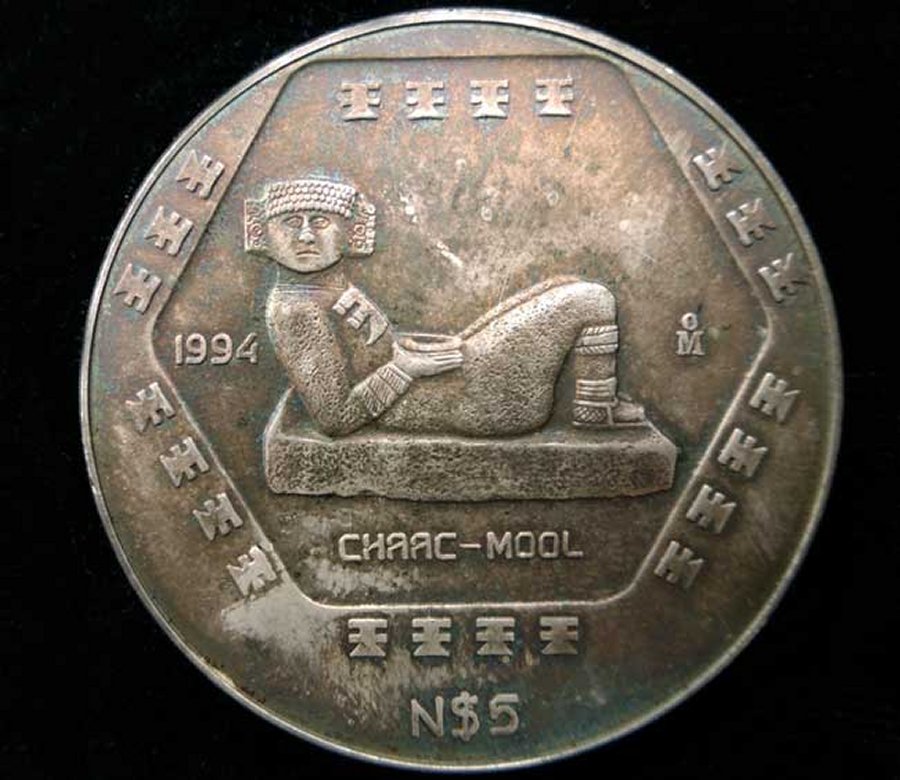
Altogether, archaeologists have discovered 14 chacmools at Chichen Itza, 12 at Tula, home of the Toltec civilization near present day Mexico City.
A few other, different forms of chacmools were found in several other such places as Tenochtitlan (Templo Mayor), Quirigua in Guatemala, Tazumal in El Salvador, Michoacan, Tlaxcala near Tula, along with Cempoala, an important Mesoamerican archaeological site located in the state of Veracruz.
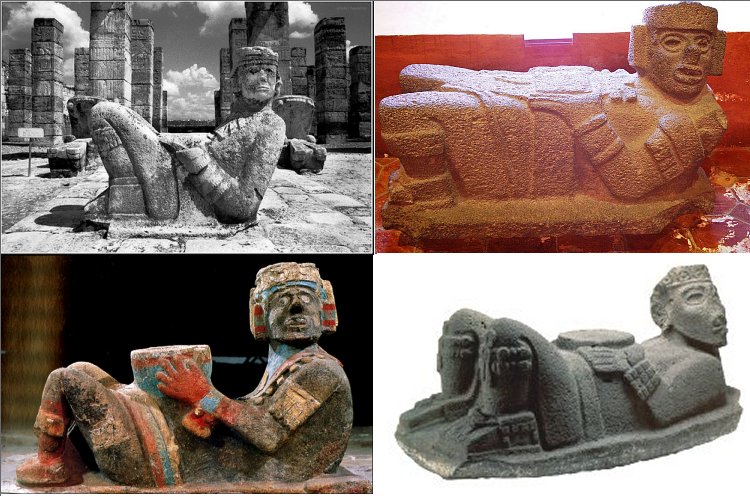
See also:
Mysterious Teotihuacan ‘Host’ Figurines From Metepec, Mexico
Magnificent Pyramid Of The Magician – The Tallest Structure In Ancient City Of Uxmal
Evidence Of Pulque God Discovered In Tlaxcala, East-Central Mexico
The figures have rather unique posture; they supports themselves on their elbows with their heads facing 90 degrees from the front. They hold a bowl or a disk or perhaps plate upon their stomachs.
The Chacmol does not appear to be of Maya origin. The ancient name for this type of sculptures is unknown. It is also uncertain what or who the statue represents or what its purpose might have been.
However, these sculptures were often associated with sacrificial stones or thrones.
Despite the great number of these figures that are known and recorded, convincing arguments for their origin, dissemination, and purpose have yet to be made.
MessageToEagle.com
Expand for references

